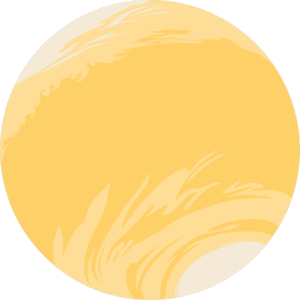The Downlink • Nov 06, 2020
Carl Sagan’s wisdom and vision, and how far we’ve come since his time
Space Snapshot

This image of Earth was taken by the Voyager 1 spacecraft on 14 February 1990 from a distance of more than 6 billion kilometers (4 billion miles). The Earth appears as a small point of light within an orangish ray of light. Our late founder, Carl Sagan, suggested that Voyager 1 turn around to take this image of our home planet. His vision was to remind all of humanity of our connectedness, here on our little world in the vastness of the cosmos. This coming Monday, 9 November would have been Sagan’s 86th birthday. To mark that day, this week we’re joining the celebration of Carl Sagan and his contributions to space, exploration, and what it means to us all. Image credit: Credit: NASA/JPL.
You love space, now take action
This weekly newsletter is your toolkit to learn more about space, share information with your friends and family, and take direct action to support exploration. Anyone can subscribe at planetary.org/connect to receive it as a weekly email.
Mission Briefings


Even Carl Sagan may never have dreamed that habitable exoplanets could be so abundant. Sagan speculated that other stars may have planets in orbit around them, but he passed away in 1996 just as the era of exoplanet discovery began. He never got to learn just how abundant exoplanets are. Scientists recently combined data from NASA’s Kepler space telescope and the European Space Agency’s Gaia mission to estimate there could be 300 million habitable planets in our own galaxy. The new estimate takes into account star temperatures and the frequency of rocky worlds that could host liquid water on their surfaces. Pictured: An illustration representing the legacy of NASA's Kepler space telescope, the mission that expanded our awareness of the abundance of exoplanets. Image credit: NASA/Ames Research Center/W. Stenzel/D. Rutter.

The European Space Agency’s Philae comet lander tumbled through ancient ice in 2014 that was “fluffier than cappuccino froth.” The conclusion comes from a new reconstruction of Philae’s path as it bounced across comet 67P before coming to a rest in a dark crevice. The fluffy ice likely dates back to the dawn of our solar system and could be easily sampled by a future space mission. Learn why we study asteroids, comets, and other small worlds.

NASA has released additional images and video from the OSIRIS-REx spacecraft’s historic sample collection on asteroid Bennu on 20 October. The mission has yielded some fresh science, too: A new study predicts Bennu probably began its life in the main asteroid belt before gravity from other worlds nudged it closer to Earth 1.75 million years ago.

A new video shows how the orbits of our solar system’s giant planets may have changed since their births. Jupiter, Saturn, Uranus, and Neptune are all thought to have been born closer to the Sun and then moved, according to the Nice model, named after the city in France where it was developed. New research by Matt Clement at the Carnegie Institution for Science provides a more detailed explanation of what may have happened, as shown in the video.

From The Planetary Society


What does the future hold for asteroid mining? At least two ambitious, smart asteroid mining companies have gone bust. On this week’s Planetary Radio TransAstra Corporation’s Joel Sercel makes the case that his company’s new effort comes at a much better time, and with a better approach. Pictured: The TransAstra Mini Bee is a technology demonstrator of the company's much larger Honey Bee spacecraft. It may be tested in space as soon as 2023. Image credit: TransAstra Corporation.

How have presidents affected space exploration? Join Planetary Society board member and George Washington University Space Policy Institute professor emeritus John Logsdon on 10 November in a free webinar, ‘Presidential Leadership in Human Space Exploration Yesterday and Today.’ Logsdon will explore the impact of past U.S. presidents on human space exploration, and will speculate on the future of human spaceflight under the next administration.

Administrations change; our space policy priorities don’t. As we finalize the content of this newsletter, a highly contentious U.S. presidential election is being decided. The Planetary Society is a nonpartisan organization committed to working with a presidential administration of either party to advance space science and exploration. Regardless of the outcome, our space policy priorities remain the same.
What's Up

Jupiter and Saturn shine side-by-side in the western evening sky, with Mars rising slightly later in the east. In the pre-dawn sky, Venus shines bright in the low eastern sky. More at planetary.org/night-sky.
Wow of the Week

This week we’re honoring one of the most poetic acts in the history of space exploration: the creation of the Voyager Golden Records. NASA’s twin Voyager spacecraft are both speeding away from our planet into interstellar space and may carry on forever unless intercepted by some other life forms. Anticipating this remote possibility, Carl Sagan led the creation of a time capsule to include with each spacecraft: 2 unique 12-inch, gold-plated copper disks carrying spoken greetings in 55 languages from Earth’s peoples, along with 115 images and myriad sounds representing our home planet. Whether Voyager 1 and 2 float through space for eternity or are intercepted by some curious alien civilization, the Golden Records carry the legacy of our species and our hope that we may not be alone in the cosmos. Image credit: NASA/JPL
Do you have a suggestion for the Wow of the Week? We’re looking for space-related art, music, gadgets, quotes, fashion, burning questions, brief sci-fi passages, or anything else that will make our readers go “Wow!” Send us your idea by replying to any Downlink email or writing to [email protected], and please let us know if you’re a Planetary Society member.


 Explore Worlds
Explore Worlds Find Life
Find Life Defend Earth
Defend Earth


